 W
WAnd the Hippos Were Boiled in Their Tanks is a novel by Jack Kerouac and William S. Burroughs. It was written in 1945, a full decade before the two authors became famous as leading figures of the Beat Generation, and remained unpublished until 2008.
 W
WBlade Runner is a science fiction novella by Beat Generation author William S. Burroughs, first published in 1979.
 W
WThe Cat Inside is an autobiographical novella written by William S. Burroughs and illustrated by Brion Gysin. The book was first published by Grenfell Press in 1986 in an edition of only 133 copies; it was later reissued by Viking Press in 1992 in a mass market hardcover edition.
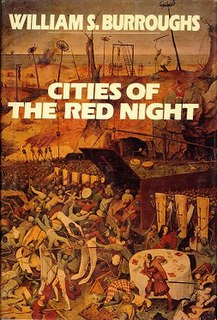 W
WCities of the Red Night is a 1981 novel by American author William S. Burroughs. His first full-length novel since The Wild Boys (1971), it is part of his final trilogy of novels, known as The Red Night Trilogy, followed by The Place of Dead Roads (1983) and The Western Lands (1987). The plot involves a group of radical pirates who seek the freedom to live under the articles set out by Captain James Misson. In near present day, a parallel story follows a detective searching for a lost boy, abducted for use in a sexual ritual. The cities of the title mimic and parody real places, and Burroughs makes references to the United States, Mexico, and Morocco.
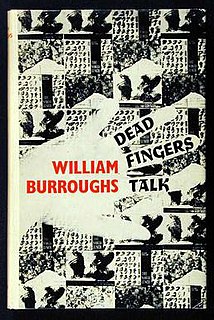 W
WDead Fingers Talk, first published in 1963, was the fifth novel published by Beat Generation author William S. Burroughs. The book was originally published by John Calder in association with Olympia Press.
 W
WGhost of Chance is a novella by William S. Burroughs. The story was first published in 1991 in a special limited edition by the Library Fellows of the Whitney Museum of American Art; this was followed by a mass market hardcover edition in 1995 by High Risk Books and a paperback edition published after Burroughs' death.
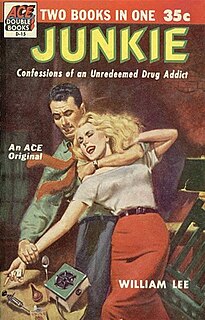 W
WJunkie: Confessions of an Unredeemed Drug Addict is a novel by American beat generation writer William S. Burroughs, published initially under the pseudonym William Lee in 1953. His first published work, it is semi-autobiographical and focuses on Burroughs' life as a drug user and dealer. It has come to be considered a seminal text on the lifestyle of heroin addicts in the early 1950s.
 W
WThe Last Words of Dutch Schultz is a closet screenplay by Beat Generation author William S. Burroughs, first published in 1970.
 W
WMy Education: A Book of Dreams (1995) (ISBN 0-14-009454-7) is the final novel by William S. Burroughs to be published before his death in 1997. It is a collection of dreams, taken from various decades, along with a few comments about the War on Drugs and paragraphs created with the cut-up technique. The book is dedicated to Michael Emerton.
 W
WNaked Lunch is a 1959 novel by American writer William S. Burroughs. The book is structured as a series of loosely connected vignettes. Burroughs stated that the chapters are intended to be read in any order. The reader follows the narration of junkie William Lee, who takes on various aliases, from the U.S. to Mexico, eventually to Tangier and the dreamlike Interzone.
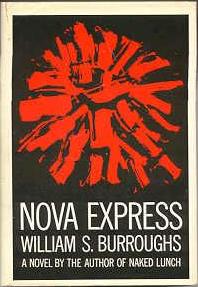 W
WNova Express is a 1964 novel by American author William S. Burroughs. It was written using the 'fold-in' method, a version of the cut-up method, developed by Burroughs with Brion Gysin, of enfolding snippets of different texts into the novel. It is part of The Nova Trilogy, or "Cut-Up Trilogy,' together with The Soft Machine and The Ticket That Exploded. Burroughs considered the trilogy a "sequel" or "mathematical" continuation of Naked Lunch.
 W
WThe Place of Dead Roads is a 1983 novel by William S. Burroughs, the second book of the trilogy that begins with Cities of the Red Night (1981) and concludes with The Western Lands (1987). It chronicles the story of a gay gunfighter in the American West, beginning with the gunfighter's death in 1899, incorporates contrasting themes and time travel episodes, and makes use of Burroughs’ extensive knowledge of firearms. Non-linear in construction, it makes use of vivid imagery and repetition but does not employ the famous “cut-up” method of literary collage used in his earlier novels.
 W
WPort of Saints is a novel by Beat Generation author William S. Burroughs. First published in 1973, it was the last major work Burroughs wrote during his self-imposed exile in Europe during the late 1960s and early 1970s.
 W
WQueer is an early short novel by William S. Burroughs. It is partially a sequel to his earlier novel, Junkie, which ends with the stated ambition of finding a drug called Yage. Queer, although not devoted to that quest, does include a trip to South America looking for the substance.
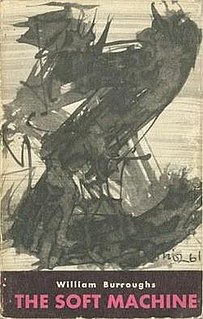 W
WThe Soft Machine is a 1961 novel by American author William S. Burroughs. It was originally composed using the cut-up technique partly from manuscripts belonging to The Word Hoard. It is the first part of The Nova Trilogy.
 W
WThe Ticket That Exploded is a 1962 novel by American author William S. Burroughs, published by Olympia Press and later by Grove Press in 1967. Together with The Soft Machine and Nova Express it is part of a trilogy, referred to as The Nova Trilogy, created using the cut-up technique, although for this book Burroughs used a variant called 'the fold-in' method. The novel is an anarchic tale concerning mind control by psychic, electronic, sexual, pharmaceutical, subliminal, and other means. Passages from the other two books and even from this book show up in rearranged form and are often repeated. This work is significant for fans of Burroughs, in that it describes his idea of language as a virus and his philosophy of the cut-up technique. Also, it features the cut-up technique being used by characters within the story. The Ticket That Exploded lays the groundwork for Burroughs' ideas of social revolution through technology, which he would later detail in his book-length essay The Electronic Revolution.
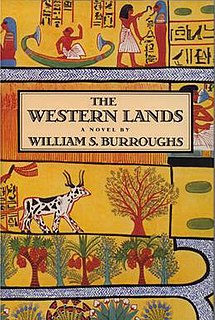 W
WThe Western Lands is a 1987 novel by William S. Burroughs. The final book of the trilogy that begins with Cities of the Red Night (1981) and continues with The Place of Dead Roads (1983), its title refers to the western bank of the Nile River, which in Egyptian mythology is the Land of the Dead. Inspired by the Egyptian Book of the Dead, Burroughs explores the after-death state by means of dream scenarios, hallucinatory passages, talismanic magic, occultism, superstition, and his characteristic view of the nature of reality.
 W
WThe Wild Boys: A Book of the Dead is a novel by Beat Generation author William S. Burroughs. It was first published in 1971 by Grove Press. It depicts a homosexual youth movement whose objective is the downfall of western civilization, set in an apocalyptic late twentieth century.